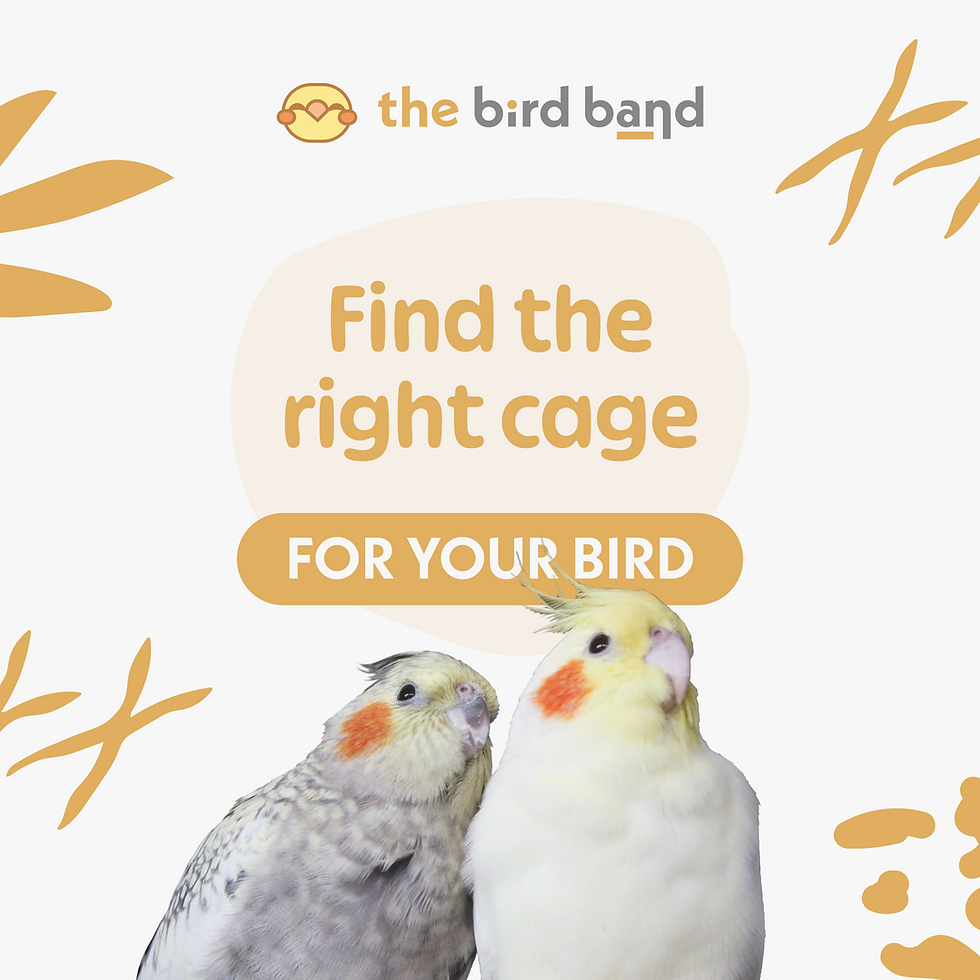Must Have Perches For Your Bird
- Ada Rocher

- Feb 13
- 3 min read
Keep Your Bird's Feet Happy and Healthy
While perches may seem like simple accessories, they play a vital role in maintaining your bird's foot health, overall well-being, and even mental stimulation.
Why Perch Variety Is Essential
Birds spend most of their lives standing on their feet, unlike humans who shift between sitting, standing, and lying down. This constant pressure makes their feet vulnerable to issues like pressure sores, also known as bumblefoot. These painful sores can lead to infections, arthritis, and long-term health complications.
The good news? Variety is the key. Birds in the wild perch on branches of all shapes, sizes, and textures, which naturally exercises their foot muscles and prevents health problems. Recreating this diversity in captivity is essential for happy, healthy feet.
The 5 Key Features of the Perfect Perch
When choosing perches for your bird, keep these five features in mind:
1. Texture
Birds need a mix of smooth and rough textures to keep their feet active and healthy. Rougher surfaces help with grip and natural nail trimming, while smoother textures give their feet a break from constant friction.
2. Size
Perches should come in various diameters to encourage your bird to adjust its grip, exercising different muscles and preventing strain. Uniform perches can cause repetitive pressure on the same spots, increasing the risk of sores.
3. Shape
Forget perfectly round dowels! Irregular, uneven shapes mimic natural branches, forcing birds to shift their weight and grip differently. This improves foot flexibility, strengthens muscles, and even benefits their posture.
4. Material
Natural materials like manzanita, cork, or Java wood are ideal. They provide a good grip, are gentle on the feet, and often double as chew toys. Avoid plastic and metal perches—they’re too smooth or harsh, offering no real benefits for foot health.
5. Placement
Don’t just line perches along the cage walls. Place them at different heights and angles to encourage climbing, hopping, and exploring. This not only supports physical health but also keeps your bird mentally stimulated.
Must-Have Perches for Every Bird Caregiver
Now that you know what to look for, let’s explore some must-have perches:

🪵 Cork Perch
Cork is a favorite! Its soft, grippable texture is perfect for climbing, and birds love to chew on it. It's like having a perch and a toy in one, providing both mental and physical enrichment.

🌳️ Natural Branch Perch
Nothing beats a real branch with rough, uneven surfaces. It’s great for foot health, offering endless grip challenges. You can find these in pet shops, but if you’re feeling adventurous, collect a safe branch from outdoors—just disinfect it thoroughly before introducing it to your bird.

🌳️ Java Tree Perch
Java tree perches are sturdy, long-lasting, and come with natural curves and knots. Their varied thickness provides excellent foot exercise, while the branching structure promotes climbing and exploration. Your bird will love resting, perching, and playing on it.
What to Avoid
While some perches are bird-approved, others can cause harm:
Plastic or Metal Perches: Too smooth, offering no foot exercise, and can be harsh on the skin.
Sand Perches: These can damage sensitive foot skin. If you have one, ensure the abrasive material isn't where your bird puts most of its weight.
Flat Wooden Perches (Cage Defaults): Fine in moderation, but only if balanced with other varied perches.
Final Tips for Happy Bird Feet
Regularly inspect your bird’s feet for signs of redness, swelling, or sores.
Rotate perches periodically to keep things interesting.
Clean perches regularly to prevent bacteria buildup.
In Conclusion
Healthy feet mean a happy bird.
By providing a variety of perches with different textures, sizes, shapes, and materials, you're not just decorating a cage—you're creating a dynamic environment that promotes both physical and mental well-being.



















Comments